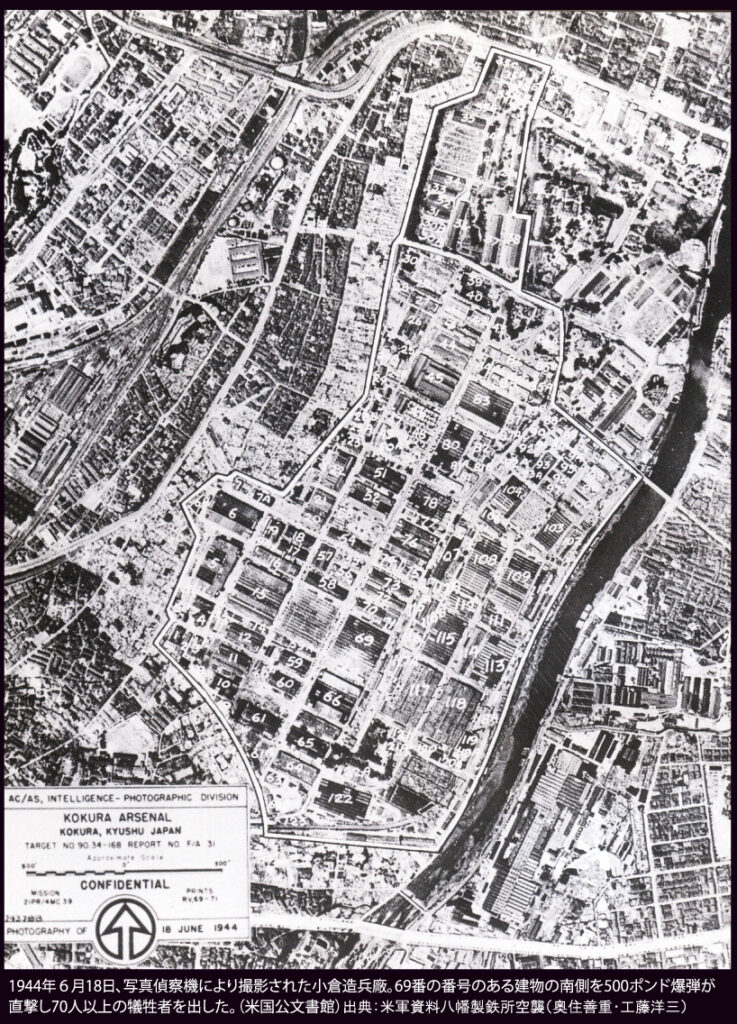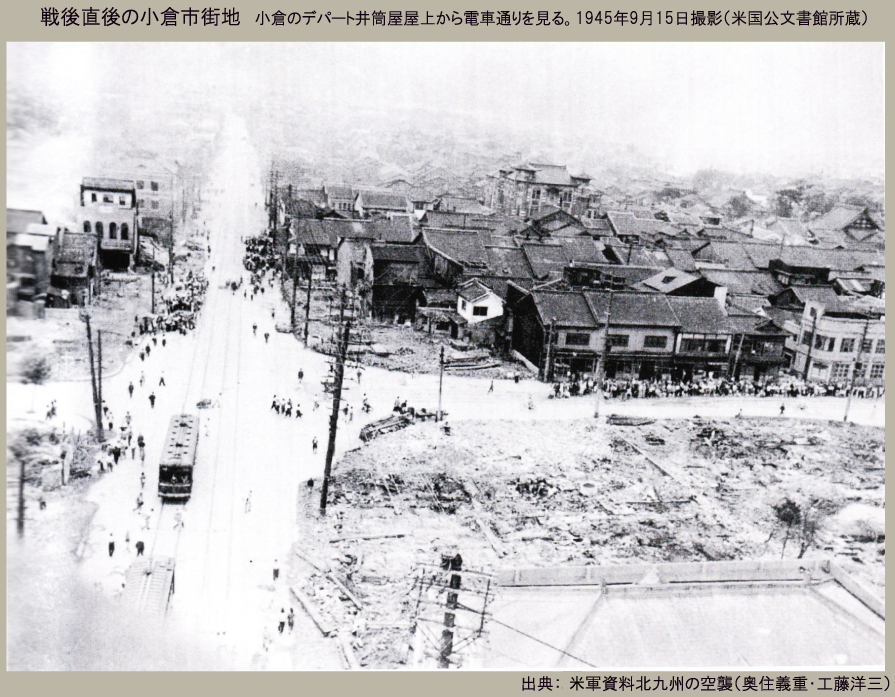Kokura Army Arsenal

The Tokyo Arsenal, an army arsenal that was once located in Koishikawa, Tokyo, suffered devastating damage in the Great Kanto Earthquake. Hiroshima and Kokura were the final candidates for reconstruction. Kokura was chosen after a strong campaign, including reaching out to local military elders. The background was the decline of the city due to disarmament in 1925, which resulted in the transfer of the 12th Division headquarters and its main forces.
■Establishment of Kokura Arsenal
In 1927, it was decided that a new factory for the Army Arsenal would be built in the old castle area on the left bank of the Murasaki River in Kokura City. The military annexed the Kokura Ordnance Factory, which had been opened in 1916, to the new factory. Also removed were the barracks and training grounds of the 14th Infantry Regiment, which had been stationed there since 1875, to create a site totaling 68 hectares. was secured. In 1933, it was officially opened as the Army Arsenal Kokura Arsenal. In 1940, due to military organizational reforms, the name was changed to Kokura Army Arsenal.
■Overview of Kokura Army Arsenal
The Kokura Army Arsenal had three manufacturing plants, No. 1, No. 2, and No. 3 within the factory and Manufactured everything from leather accessories and cast steel to rifles, machine guns, machine guns, artillery shells, and vehicles to light tanks. In addition, the Kokura Army Arsenal also produced balloon bombs that were flown to the U.S. mainland at the end of World War II. Judging from the items manufactured, it can be seen that it was one of the largest comprehensive weapons manufacturing facilities in western Japan. On the other hand, the number of employees working here is said to have been around 40,000, including soldiers, military civilians, regular workers, and temporary workers.
■WWII and Kokura Army Arsenal
During World War II, the factory’s No. 2 factory was hit by a U.S. military air raid, and many female volunteers were also killed. In addition, in August 1945, near the end of the war, the Kokura city area, centered on the arsenal, became the second target area for the U.S. military to drop an atomic bomb after Hiroshima. On the 15th of the same month, with the end of the war, the factory ceased functioning. Afterward, machine tools and other equipment were taken out as compensation supplies, and part of the US 32nd Infantry Division was stationed there. In 1946, the U.S. 24th Infantry Division, which replaced it, established its division headquarters in the former main building of the factory. The division immediately went to the front lines when the Korean War broke out.
Even after World War II ended, peace did not come to this area for a while.

<Secret> Target Information Sheet
From the U.S. military document Air Raid on Kitakyushu (Yoshishige Okuzumi and Yoichi Kudo)
I don’t have the original in English. This is translated from Japanese translated material.
Do not bring it on board when flying out.
1. Summary:
The Kokura Arsenal is one of the largest of Japan’s arsenals, and perhaps the most important in Japan for the production of light automatic weapons and small anti-aircraft and anti-tank guns. It is closely integrated with Nippon Steel, Yahata Works, Watanabe Steel Works in Fukuoka, and several other plants in Kitakyushu. It also manufactures combat vehicles.
2. Facility explanation:
The total area of the target is 4,140 feet by 2,040 feet with a north-south axis. Thirty-three percent of this area is occupied by 36 buildings, each covering more than 20,000 square feet. Three cranes moving overhead connect the service line to a storage area in the southeast corner of the campus.
Information from prisoners of war indicates that the factory consisted of three separate departments, arranged in parallel stripes running from north to south. They are as follows. (1) Ammunition department, closest to the river and on the east side; (2) Artillery department, extending as two rows of buildings through the middle of the compound; (3) Combat vehicle manufacturing is reported to be in the western part of the compound. Ta. Approximately 22 barrack-like buildings at the northern end of the area are a military garrison.
Of the major buildings, 71% have a steel frame and 29% have a concrete frame. Secondary buildings are also generally of steel frame, with occasional wood frame buildings mixed in. The walls were made of sea cucumber board, concrete, or asbestos. Most of the roofs were covered with sea cucumber boards or asbestos, with only a few flat roofs believed to be concrete. Many small buildings have flammable roofs. Virtually all floors are concrete. Most buildings are one-story buildings.
3. Importance:
In an arsenal with various activities like this one, the rate of production is unknown. But perhaps thousands of machine guns of all kinds are made a month. As one of the two or three largest arsenals in Japan, its importance is clear. This arsenal does not produce basic iron or copper. However, secondary metal processing facilities are carried out on a large scale. The necessary electricity will be supplied by the Kitakyushu power grid.
The arsenal is known to produce 6.5mm and 7.7mm light machine guns, 7.7mm heavy machine guns, 20mm anti-aircraft and anti-tank guns, and ammunition. It has been reported that they are making mixed poison gas bombs, filling them with gas bombs, and storing these gas bombs in their basements. Information from prisoners of war indicates that the factory manufactures combat vehicles. The most important processes at this factory are the mechanical finishing and assembly of weapons. Forging and pressing are also important.
Damaged machine tools will be difficult to replace and will be out of production for many months. While the damage done to assembly equipment and processing operations is probably less problematic in the long run than destroying specialized machinery that Japan is believed to be in critical need of, the effects will be immediate.
XXI Bomber Group A-2, Target Team
June 10, 1945
Kokura city area immediately after the war
